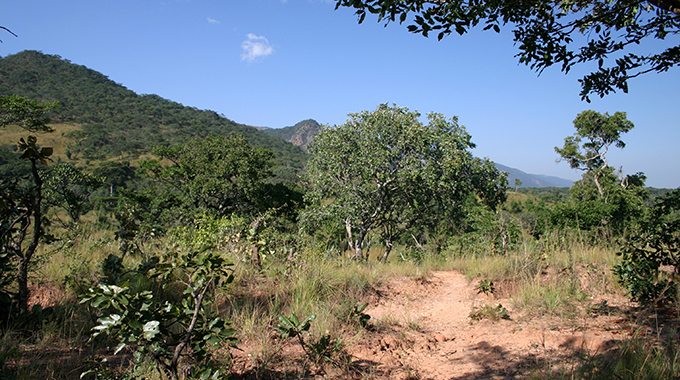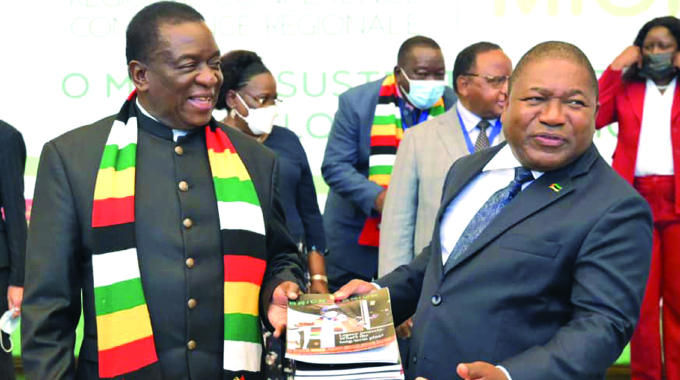Miombo trees the heartbeat of Zim

Herald Reporter
MILLIONS of Zimbabweans live in rural communities and depend primarily on wood for their energy requirements, but land degradation, climate change and population growth have exerted unbearable pressure on Miombo woodlands.
The woodlands are not peculiar to Zimbabwe, but are common in the Southern African region, and their management is vital to sustainable development.
President Mnangagwa, along with his regional counterparts, attended the High-Level Session of the Regional Conference on the Sustainable and Integrated and Integrated Management of Miombo forests, in Maputo, Mozambique yesterday to agree on ways to protect the forests.
In Zimbabwe, 262 000 hectares of forests are burnt down every year.
Environmentalists say the Miombo woodlands are a tropical and subtropical grassland, savannas, and shrublands biome located primarily in Central Africa.
They are essential to the livelihoods of many rural people who depend on the resources available from the woodlands.
The wide variety of species provide non-timber products such as tourism, fruits, honey, fodder for livestock and fuel-wood.
Miombo woodlands can be classified as dry or wet based on the per annum amount and distribution of rainfall.
Dry woodlands occur in those areas receiving less than 1 000 mm annual rainfall, mainly in Zimbabwe, central Tanzania and the southern regions of Mozambique, Malawi and Zambia.
Wet woodlands are those receiving more than 1 000 mm annual rainfall, mainly located in northern Zambia, eastern Angola, central Malawi and southwestern Tanzania.
Miombo woodlands are home to elephants, rhinos, giraffes and other diverse wildlife.
The importance of the Miombo woodlands led to the convening of the regional conference in Maputo, where Mr Adriano Maleiane the Prime Minister of Mozambique, officially opened the meeting.
Mr Maleiane re-emphasised the importance of preserving the Miombo woodlands as they are critical in retaining ecosystems and climate resilience and for economic strengthening.
In an interview last night, Forestry Commission general manager Mr Abedinigo Marufu, who attended the conference, told The Herald by phone from Maputo that the Miombo woodlands were important to Zimbabwe and other countries, hence the need to sign an agreement to protect them.
He said the Declaration, signed yesterday by President Mnangagwa and other representatives of SADC countries with the Miombo woodlands, was aimed at ensuring sustainable management of the tree species.
In Zimbabwe, he said, some of the trees found under Miombo woodlands are Musasa, Munhondo, Mupfuti and some other fruit trees such as Muzhanje and Muchakata.
Mr Marufu said the countries with the tree species had agreed to have a common strategy in managing the trees, following massive deforestation due to a number of factors including cutting down trees for charcoal, infrastructure development and to cure tobacco among others.
“We recognise that the greater part of our population in these countries live in the Zambezi basin where you find bigger sizes of Miombo woodlands.
“Our populations tend to follow this biome because that is where you find good rainfall, most of our rivers which go into the Zambezi will have watersheds in the Miombo woodlands.”
In Zimbabwe, most of the Miombo woodlands are found in Mashonaland Central, West and East provinces and parts of the Midlands province, where populations are concentrated, resulting in deforestation.
The countries resolved to work together to ensure they stop illegal trade in forest produce, as part of protecting the Miombe woodlands.
Said Mr Marufu: “Mozambique will not allow passage of any forest product through their borders coming from member States. Similarly, South Africa, Botswana, Zambia, Malawi and Tanzania will not allow passage of forest produce.
“In this biome we get the highest rainfall, which is very important to our communities. We find lots of farming happening in this region.
“In forests, we also find non-timber forest products such mushroom production, medicines and also tourism because to a greater extent, that is where we find greater populations of our animals.”
It was agreed that traditional leaders must participate in the protection of the woodlands against deforestation, fire and poor agricultural practices, implying that Ministries of Agriculture in member States will also work to ensure farmers follow good agronomic practices.











Comments